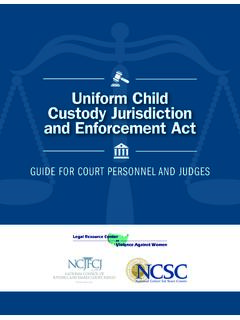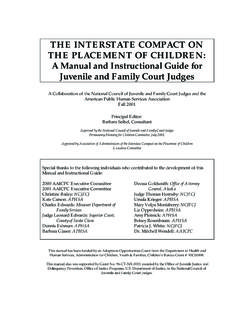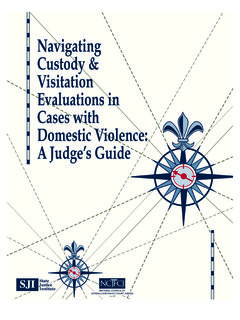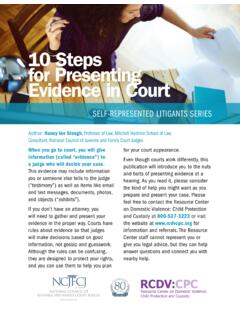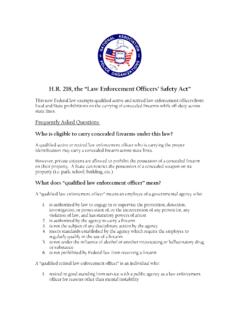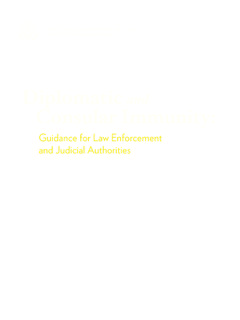Transcription of School Resource Officers: Steps to effective school …
1 School Resource Officers: Steps to effective School - based law enforcement Authors: Benjamin Thomas, MS; Laura Towvim, MSPH; John Rosiak, MA; Kellie Anderson, MPH. Special thanks to Mo Canady, National Association of School Resource Officers; Alicia Castro, The California Endowment; Eduardo Negron, Milwaukee Public Schools; Barrie Becker, Fight Crime: Invest in Kids; and Amy Blaisdell, Education Development Center, Inc., for their guidance and review of this document. September 2013. For students and educators to achieve their full potential, safe schools are fundamental. Students who report feeling safe in School are more engaged in class, have higher academic achievement, and have lower rates of absenteeism, truancy, and behavioral , 2, 3, 4 Likewise, educators who report feeling safe in School are better able to focus on academics, are more likely to remain in their positions, and are better equipped to teach and support , 6, 7 Feeling safe in School is intrinsically connected to achieving educational outcomes for students and educators alike.
2 Many communities seek the help of law enforcement to promote School safety and protect schools from violence and disorder. School Resource officer (SRO) programs that are implemented and sustained through an organized and comprehensive process can help prevent School - based violence, connect at-risk students to needed services, divert youth from juvenile court, and create safe, secure, and peaceful School , 9, 10, 11, 12. effective School - based law enforcement programs require more than simply stationing officers in schools. Strong SRO programs are built on careful selection and training of officers, well-defined roles and responsibilities, and a comprehensive agreement between the School and the law enforcement agency that fosters collaboration, communication, and ongoing evaluation.
3 13. This brief covers the following: What SROs are and their roles as educators, informal counselors, and law enforcers The potential benefits and pitfalls of School - based law enforcement programs The proactive, collaborative role SROs can play in schools The value of a comprehensive agreement between the School and the law enforcement agency, and of written guidelines clarifying an SRO's work How to properly select and train SROs National Center for Mental Health Promotion and Youth Violence Prevention -1- What Are School Resource Officers? SROs are sworn law enforcement officers who are specially selected and trained to promote safety within schools.
4 Officers are typically employed by law enforcement agencies, such as the local police department or sheriff's office, and are usually funded through local law enforcement or education budgets. Funding may also come from government agencies, such as the Department of Justice's Community Oriented Policing Services (COPS) , 15 The School is the SRO's police beat, or patrol territory, where he or she fulfills a multifaceted role, proactively promoting safety by building trusting relationships with students, staff, and caregivers. First initiated in the 1950s, School - based law enforcement programs have grown in popularity in recent decades.
5 In the 1990s, amid growing fears about juvenile crime, several high-profile School shootings, and increased federal funding for School - based law enforcement programs, more and more communities began assigning officers to From 1997 to 2003, the number of School - based law enforcement officers rose 52 percent, from 9,400 to 14,337. 17 As of 2012, well over 10,000 officers police approximately 40 percent of schools nationwide, primarily at the secondary School , 19. School - based law enforcement poses some unique policing challenges. Traditionally, schools focus on promoting academic achievement, while the work of law enforcement centers on creating and maintaining law and order.
6 These differing missions impact how each entity interacts and relates with youth, as well as how each responds to problem behavior. effective SRO programs encourage dialogue between schools and law enforcement to help bridge the gap across cultures, identify and develop a shared vision, and align School philosophies with SROs' commitment to , 21. Unlike the largely adult populations served by patrol officers or road deputies, SROs predominately serve youth in schools. Youth-centered policing requires crisis intervention training, nuanced communication skills, an enhanced understanding of juvenile justice, and knowledge of and sensitivity to youth social and cognitive , 23, 24, 25 Full-time, long-term assignments to schools coupled with comprehensive training can help to ensure that SROs build the skills, knowledge, and relationships necessary for serving School National Center for Mental Health Promotion and Youth Violence Prevention -2- The Case for High-Quality SRO Programs In recent years, School - based law enforcement has come under heightened scrutiny.
7 News of officers misusing their power to search, restrain, or arrest youth inside schools raises significant , 28 Some studies have found associations between the presence of School - based law enforcement and increased student arrests and referrals to juvenile court for School discipline issues often for public order offenses, such as disorderly conduct, disrupting the educational process, or disrupting a public , 30, 31 Involvement in the juvenile justice system can negatively impact a child's life trajectory, hindering educational success and raising the risk of adult criminality. These findings elevate the importance of creating an effective SRO program focused on prevention and diversion.
8 These data, however, include all School - based law enforcement programs and are not necessarily specific to comprehensive SRO programs. Some studies and local evaluations indicate that SROs can have a positive impact, resulting in reduced suspensions, arrests for assaults and weapons charges, disciplinary actions, serious School violence, and crime in the areas surrounding , 33, 34, 35. Surveys of educators, students, officers, and community members suggest that School - based law enforcement programs are popular and perceived as effective . Respondents report that officers can do the following: Increase feelings of safety among students, teachers, and administrators 36, 37.
9 Deter aggressive behavior, and empower staff to maintain order and address behavioral issues in a timely fashion38, 39. Diminish classroom time spent on discipline and behavioral disruptions 40, 41. Improve School safety and reduce School - based crime42, 43, 44. Increase the likelihood that students report witnessing a crime,45 and help reduce community-wide criminality46. Improve relationships between law enforcement and youth 47, 48. Existing data suggest that more rigorous research, such as randomized controlled trials, is warranted to assess the true impact of School - based law enforcement broadly, and SROs in , 50 Nevertheless, in communities that opt to use School - based law enforcement as part of their School safety strategy, the evidence to date suggests that properly selected, trained, and governed SROs can achieve positive outcomes and avoid the pitfalls linked to some School - based law enforcement programs.
10 National Center for Mental Health Promotion and Youth Violence Prevention -3- A Proactive, Collaborative Approach to School - based Law enforcement SROs focus on prevention and early intervention, reflecting a shift in the law enforcement role from reactive (responding to problems as they occur) to proactive (identifying and altering the conditions that create School safety issues).51 A common law enforcement approach to addressing School safety issues is the SARA Model:52. Scan the environment to identify patterns in recurrent issues of School safety Analyze the causes of these patterns to target areas amenable for intervention Respond with interventions to reduce the frequency or severity of these issues Assess the impact of interventions, and refine them as needed Proactive School - based law enforcement relies on positive relationships between officers and students.
